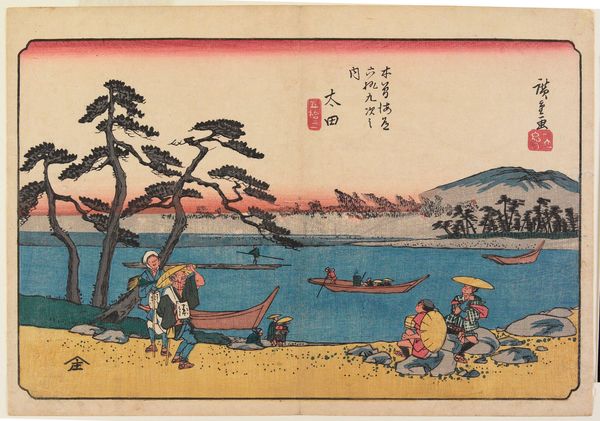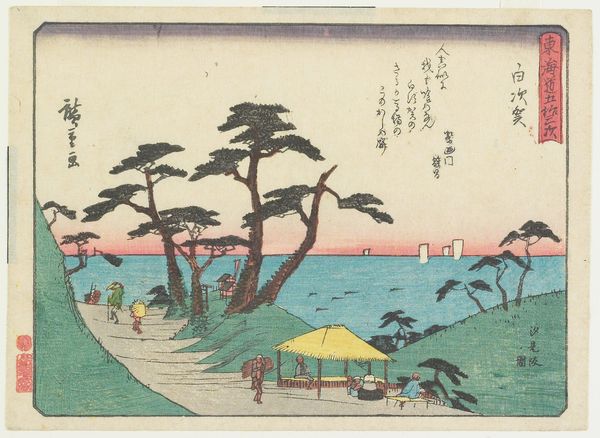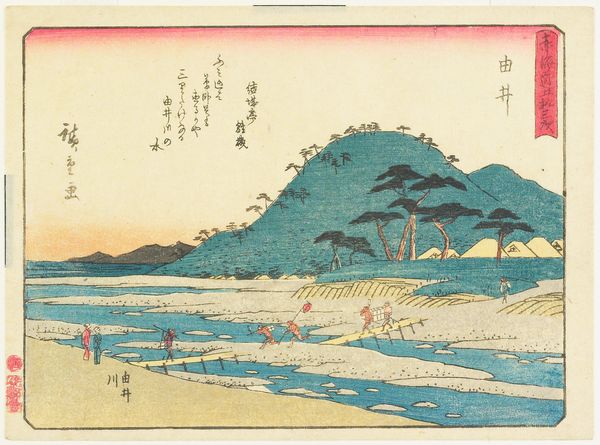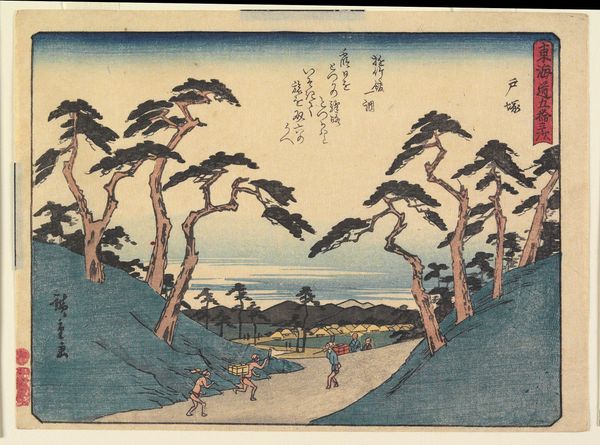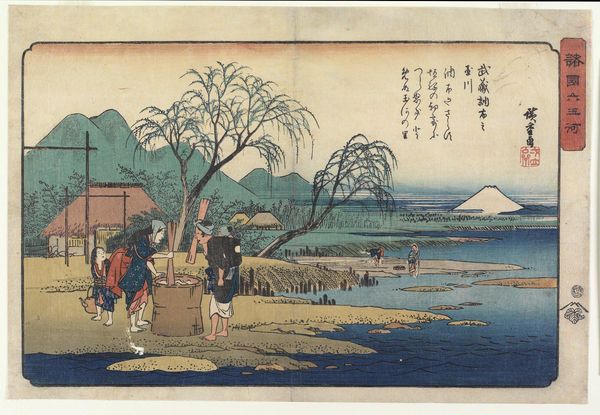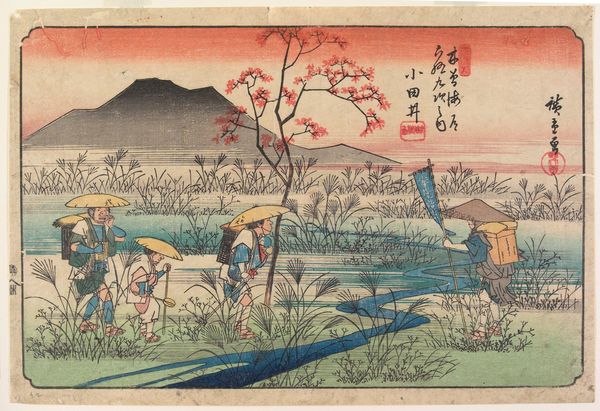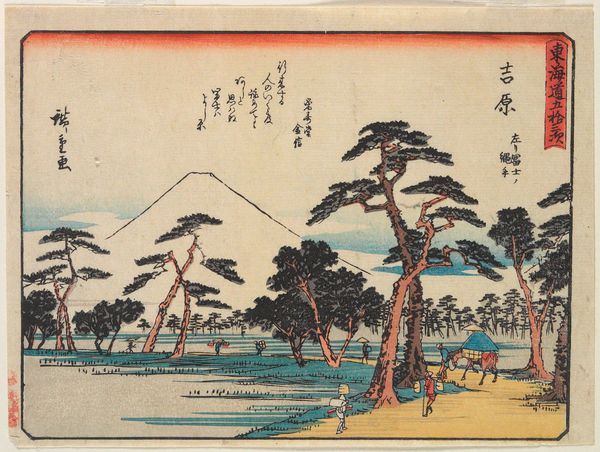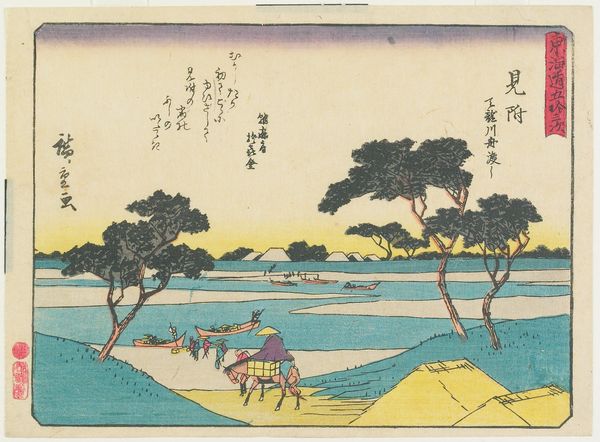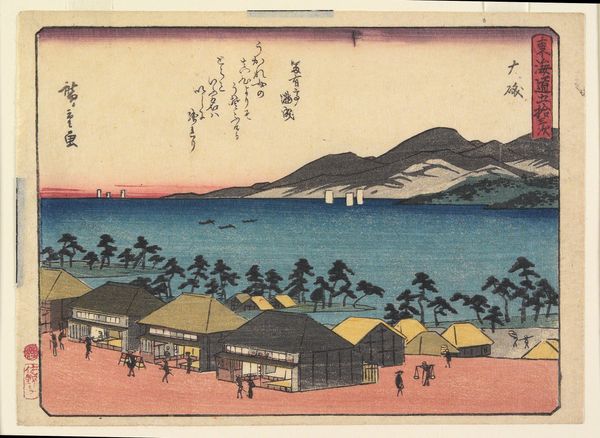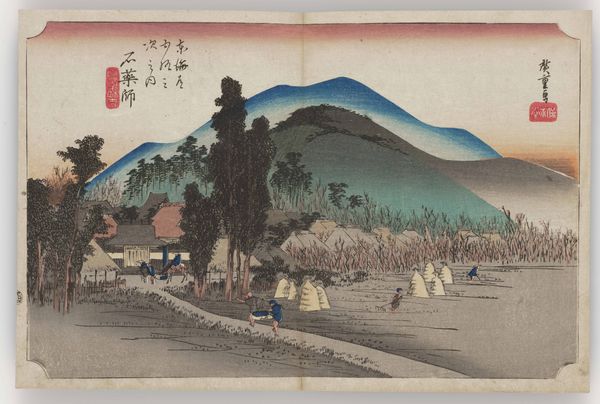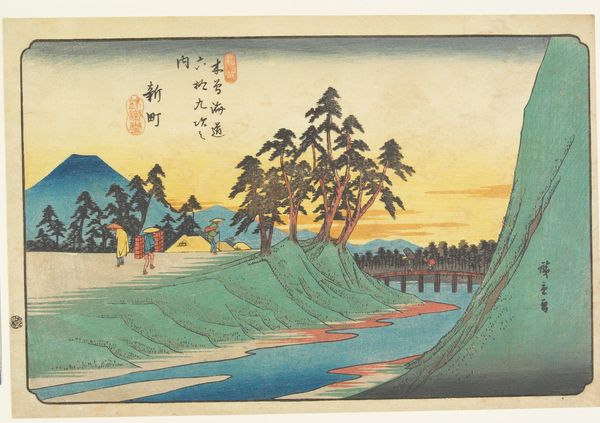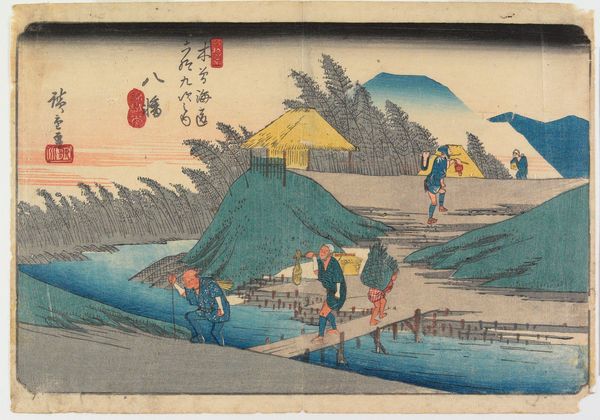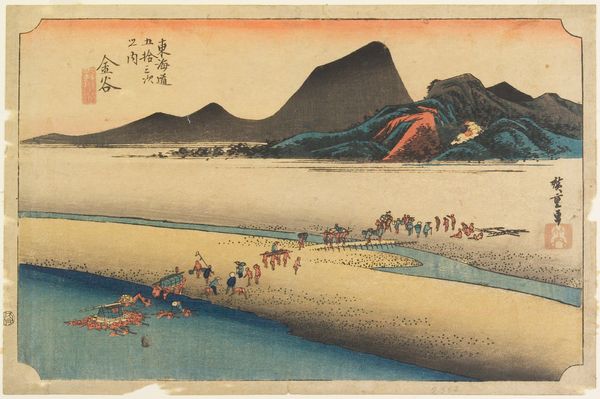
print, watercolor, ink
#
water colours
# print
#
landscape
#
ukiyo-e
#
japan
#
watercolor
#
ink
#
orientalism
Dimensions: 8 3/4 × 13 11/16 in. (22.3 × 34.7 cm) (image, horizontal ōban)
Copyright: Public Domain
Utagawa Hiroshige made this print, No. 46, using woodblock printing, a painstaking process, requiring a skilled artisan to carve a separate block for each color. Consider the materiality of the wood itself. The grain subtly influences the image, particularly noticeable in the sky. Water-based inks allow for translucent layers. The lines are crisp, but softer than what you'd get from metal engraving. This technique was ideal for mass production in 19th-century Japan. The final print embodies a complex relationship between art, craft, and commerce. It involved collaboration, with Hiroshige as the designer, and highly skilled block cutters and printers executing his vision. The division of labor contrasts with the image's serene depiction of laborers on the road. This was a business that relied on division of labor, which is often how images were proliferated across Japan. What does it mean to see the fruits of labor alongside an image that was the product of labor? Hopefully it prompts us to think about those relationships.
Comments
No comments
Be the first to comment and join the conversation on the ultimate creative platform.
